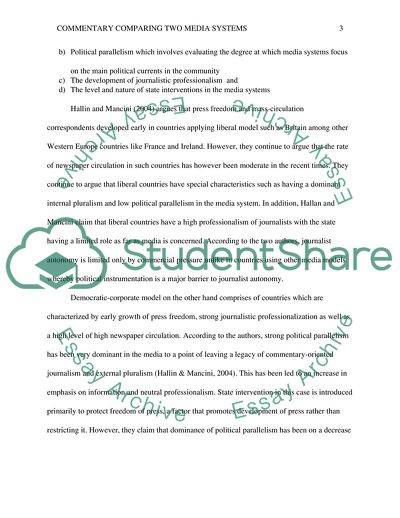Cite this document
(Commentary Comparing Two Media Systems Literature review Example | Topics and Well Written Essays - 1500 words, n.d.)
Commentary Comparing Two Media Systems Literature review Example | Topics and Well Written Essays - 1500 words. https://studentshare.org/media/1818647-a-commentary-comparing-two-media-systems-or-professional-journalism-practices-in-two-countries-r-two-media-systems-in-transitionconflict
Commentary Comparing Two Media Systems Literature review Example | Topics and Well Written Essays - 1500 words. https://studentshare.org/media/1818647-a-commentary-comparing-two-media-systems-or-professional-journalism-practices-in-two-countries-r-two-media-systems-in-transitionconflict
(Commentary Comparing Two Media Systems Literature Review Example | Topics and Well Written Essays - 1500 Words)
Commentary Comparing Two Media Systems Literature Review Example | Topics and Well Written Essays - 1500 Words. https://studentshare.org/media/1818647-a-commentary-comparing-two-media-systems-or-professional-journalism-practices-in-two-countries-r-two-media-systems-in-transitionconflict.
Commentary Comparing Two Media Systems Literature Review Example | Topics and Well Written Essays - 1500 Words. https://studentshare.org/media/1818647-a-commentary-comparing-two-media-systems-or-professional-journalism-practices-in-two-countries-r-two-media-systems-in-transitionconflict.
“Commentary Comparing Two Media Systems Literature Review Example | Topics and Well Written Essays - 1500 Words”. https://studentshare.org/media/1818647-a-commentary-comparing-two-media-systems-or-professional-journalism-practices-in-two-countries-r-two-media-systems-in-transitionconflict.


